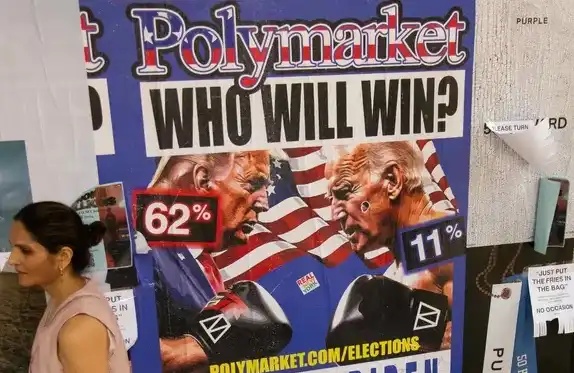Finding the core of how Solana truly outperforms Ethereum
Editor's note: According to data, Solana's token SOL has risen nearly 60% in the past month, whether it is the LSD protocol stimulated by airdrop information on Solana, or the NFT market quietly doubling in floor price, Solana has shown a good development trend in this round of bull market. Therefore, the title of "Ethereum Killer" for Solana has been brought up for discussion again. Community blogger _gabrielShapir0 published a long tweet discussing the differences between Ethereum and Solana, and how they affect the important propositions of "decentralization" and "autonomy". BlockBeats compiled the following:
Author: _gabrielShapir0 (@lex_node)
Translation: Joyce, BlockBeats
I have been wanting to write this article for some time now. Ever since delving deep into Solana (and its centralized origins at the DApp level) a year ago, I have been pondering these questions.
Generally speaking, in my opinion, Solana is attempting to achieve better scalability and composability by shifting costs onto DApp teams and infrastructure providers rather than users... This is also the source of SOL's value proposition.
If the main goal of a blockchain is to achieve low fees, then the value of its token cannot solely come from transaction fees. In contrast, Ethereum's value growth comes from users needing to pay (and partially destroy) ETH in every transaction, which makes it expensive for users but beneficial for those holding ETH.
On the other hand, in order to ensure the security of the blockchain, some form of value proposition is needed. How does Solana solve this problem?
- Charge state rent to decentralized application (DApps) teams.
- Collecting voting fees from validators, which means validators must pay in order to participate in block voting.
These two features do not exist in Ethereum, and they create additional value-driving factors for Solana tokens (SOL), which to some extent offsets the impact of the lack of transaction fee demand on SOL prices, while also alleviating some security and public resource issues (such as state bloat).
However, the problem is that both of these may limit decentralization (as the fixed cost of becoming a validator increases), and in addition, due to the existence of state rent and the difficulty of coordinating payments at the "community" level, it actually limits the immutability of DApps.
The first issue was pointed out by @ceterispar1bus in his article on Solana on his Delphi Research. "This fixed cost plus variable income based on the holding mechanism essentially has a natural centralizing force, as larger validators essentially collect voting fees from smaller validators. The following example provides a high-level illustration of this dynamic. After about 10 days of voting, the largest validator increased by 0.6% relative to the initial holding, while smaller validators purely lost 0.6% from voting."

The second question, we have seen at least one Solana DApp team give up their DApp during the bear market.

Setting aside the discussion of token economics, there is another issue that is often noticed, which is the hardware requirements for Solana's performance validators... However, despite the fierce criticism from ETH maxis, this is not a "centralization" issue - Solana validators are decentralized (with a high Satoshi coefficient).
"One of the most common criticisms of Solana is the expensive hardware required to run a full node. Due to the high cost of running a full node, the number of nodes will be limited to a small number of network participants. Solana's target slot time is 400 milliseconds, and the globally distributed validator set is slower compared to centralized validators. So, how does Solana perform and achieve such performance?"

There are also questions about how smart contracts work on Solana and the resulting issues of centralization/trust... Solana contracts work on the literal chain inheritance structure, for example, all NFTs are sub-contracts of the main NFT contract controlled by Metaplex's multi-signature.
My first concern is the number of critical programs still controlled by multi-sig. For example, each NFT is based on Metaplex standards, and until their programs become immutable in about two years (z years), every NFT on Solana could be changed to, say, a banana, or a coconut, or even a banana-shaped coconut... you get the idea. Even with this immutability plan in place, Metaplex has now introduced a tax, and concerns about centralization/monopoly still exist.

This inevitably raises obvious trust issues, however, this model may also bring some benefits. It turns creating new smart contract standards into an entrepreneurial activity, while also reducing the due diligence burden on users as they no longer need to check the deployment of individual token contracts.
On the other hand, this model and cNFT pattern also demonstrate how costs can sometimes be hidden. If there are too many rent-seekers, user costs may increase, and Solana provides some opportunities in its structure that Ethereum does not have. MetaPlex may always tax NFT transactions.
At the same time, cNFTs are very attractive to users and can provide them with lower costs, thereby reducing overall expenses. However, these reduced costs will be passed on to DApp teams to pay for RPC (remote procedure call) fees to maintain data. This means that, similar to the state rent problem, Solana's DApps may not be able to pass the "Bahamas test".
In all of these aspects, if Solana is not as "decentralized" as Ethereum, it would be a huge mistake... This is not a matter of power decentralization... But more precisely, it is a matter of autonomy, that is, a problem of censorship resistance.
To understand the difference, you can read this article on "Autonomy vs Decentralization" at https://lex-node.medium.com/autonomy-vs-decentralization-ceb2645f9cd5.
Although Ethereum theoretically achieves immutability, autonomy, and resistance to censorship, and accordingly charges users high premiums, Solana is cheap, shifting the security cost to validators and DApp providers.
Therefore, generally speaking, Solana DApps will have a harder time minimizing trust from their team (affecting decentralization). In theory, the economies of scale for Solana validation should be at least larger than that of Ethereum validators (decentralized).
In addition, the reason why we care about decentralization is because it limits autonomy. Therefore, the real issues regarding performance requirements are that Solana's validation may be limited to complex data centers that are easily subject to summons/seizures, which may lead to the occurrence of censorship systems.
Therefore, if you believe that the USP of blockchain is resistance to censorship/autonomy, then ETH is still a better choice than SOL because it is more suitable for the unique purpose of blockchain.
However, what if Ethereum is not very good at resisting censorship? What if Ethereum is not actually very autonomous?
Ultimately, the autonomous pillar in PoS systems relies on the community's willingness to engage in UASF (User Activated Soft Fork) and social sanctions against validators who engage in censorship. Unfortunately, Ethereum's recent performance in this regard has not been significant in terms of OFAC (Office of Foreign Assets Control) compliance.
Related reading: "The Case for Social Slashing".
In the business reality of PoS, social sanctions are not only imposed on validators, but also on many innocent customers who use staking services if these validators are (likely) institutions.
Will a small number of Ethereum developers really "comply with the law" and cut millions of dollars worth of ETH from Coinbase customers on social media because Coinbase has reviewed OFAC's smart contracts? I doubt it, and it seems that Vitalik also doubts it (he is now advocating for privacy pools).
Welcome to join the official BlockBeats community:
Telegram Subscription Group: https://t.me/theblockbeats
Telegram Discussion Group: https://t.me/BlockBeats_App
Official Twitter Account: https://twitter.com/BlockBeatsAsia


 Forum
Forum Finance
Finance
 Specials
Specials
 On-chain Eco
On-chain Eco
 Entry
Entry
 Podcasts
Podcasts
 Activities
Activities
 OPRR
OPRR









